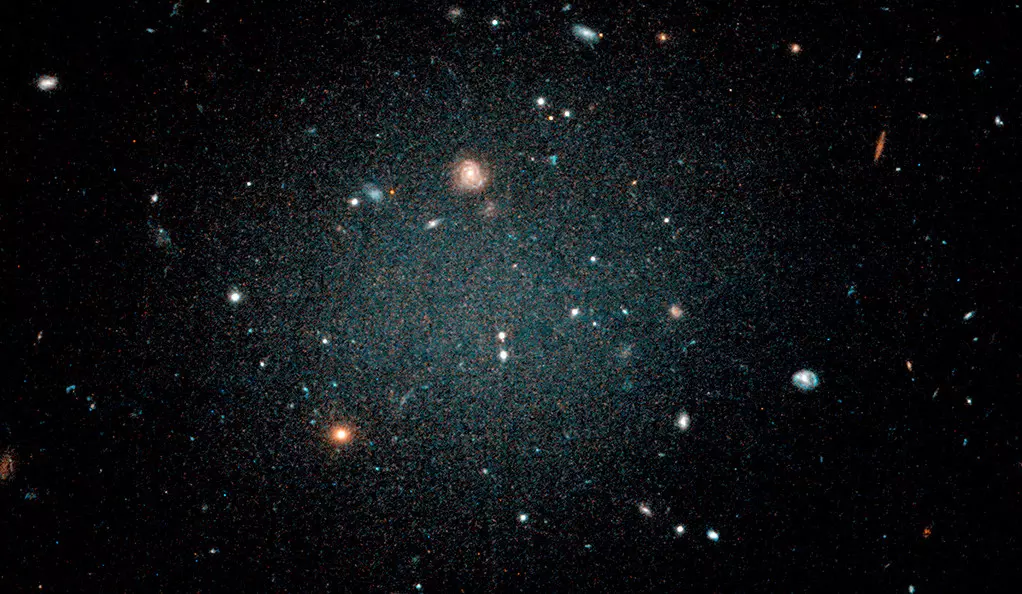[Originally published as This Galaxy Has No “Need” For Dark Matter!]
Dark matter is one of those things that scientists use to make sense of an observation which is inconsistent with the known laws of physics. When astronomers look at the motion of stars in a galaxy, they can use Newton’s Law of Universal Gravitation to estimate how much mass must be in the galaxy to produce the motion that is observed. However, they can also use the amount of light they see coming from the galaxy to estimate how much mass is there. In general, those two masses don’t agree.
The motion of the stars indicates significantly more mass than the light coming from the galaxy.
That’s where dark matter comes in. Since the matter we can see using the light that comes from a galaxy doesn’t account for the motion of the stars within the galaxy, there must be a lot of matter that is too dark to see. But if it’s too dark to see, it must be some strange type of matter that is fundamentally different from the matter we have studied here on earth. Many experiments have been done trying to directly observe dark matter, but so far, they have come up empty. Thus, if dark matter exists, its nature is a complete mystery to us. This is frustrating, since astrophysicists think that about 80% of the mass in the universe comes from dark matter!
Some scientists (I count myself among them) are hesitant to accept that about 80% of the universe’s mass is made up of something we can’t detect, so they look for alternate explanations.
One group suggests that on very large scales, Newton’s Law of Universal Gravitation is slightly different from what it is here on earth. These physicists suggest a modified version of the law, which they call Modified Newtonian Dynamics (MOND). If you accept their modification, the need for dark matter goes away.
Another scientist suggests that if you actually apply Newton’s Law of Universal Gravitation properly (taking into account that there are multiple bodies exerting gravitational force on all the other bodies and that those bodies are in constant motion), you need very little (if any) dark matter to understand why the stars move so quickly in galaxies.
Well, these three competing ideas (dark matter, MOND, and multiple-body analysis) have just been presented with a means by which they can distinguish themselves: a diffuse galaxy charmingly named NGC 1052-DF2, which is pictured above. This is the first discovered galaxy for which the mass calculated from the motion of the stars is pretty much equal to the mass calculated from the light that we see. Thus, there is no “need” for dark matter in this galaxy.
Now this galaxy is anything but a run-of-the-mill collection of stars. Most galaxies have a noticeable central region. This one doesn’t. Most galaxies have dense enough stars that there are portions through which you cannot see. This galaxy is completely see-through. Most galaxies have tight clusters of stars that orbit the outer parts of the galaxy. While this one has those clusters, they are about twice as large as the clusters seen in other galaxies. Most galaxies show evidence of a central black hole. This one doesn’t. Finally, it is part of a group of galaxies that is dominated by a very large, active galaxy known as NGC 1052. It’s possible that all these features somehow explain the apparent lack of need for dark matter.
I really hope the group promoting MOND and the scientist promoting a multiple-body solution to star motion in galaxies turn their attention to this new discovery. While I am happy to believe in dark matter if there is strong evidence for it, right now, I am inclined to believe there is an alternate solution to the “missing mass” problem in galaxies. Hopefully, further analysis of this galaxy will help us find out.






